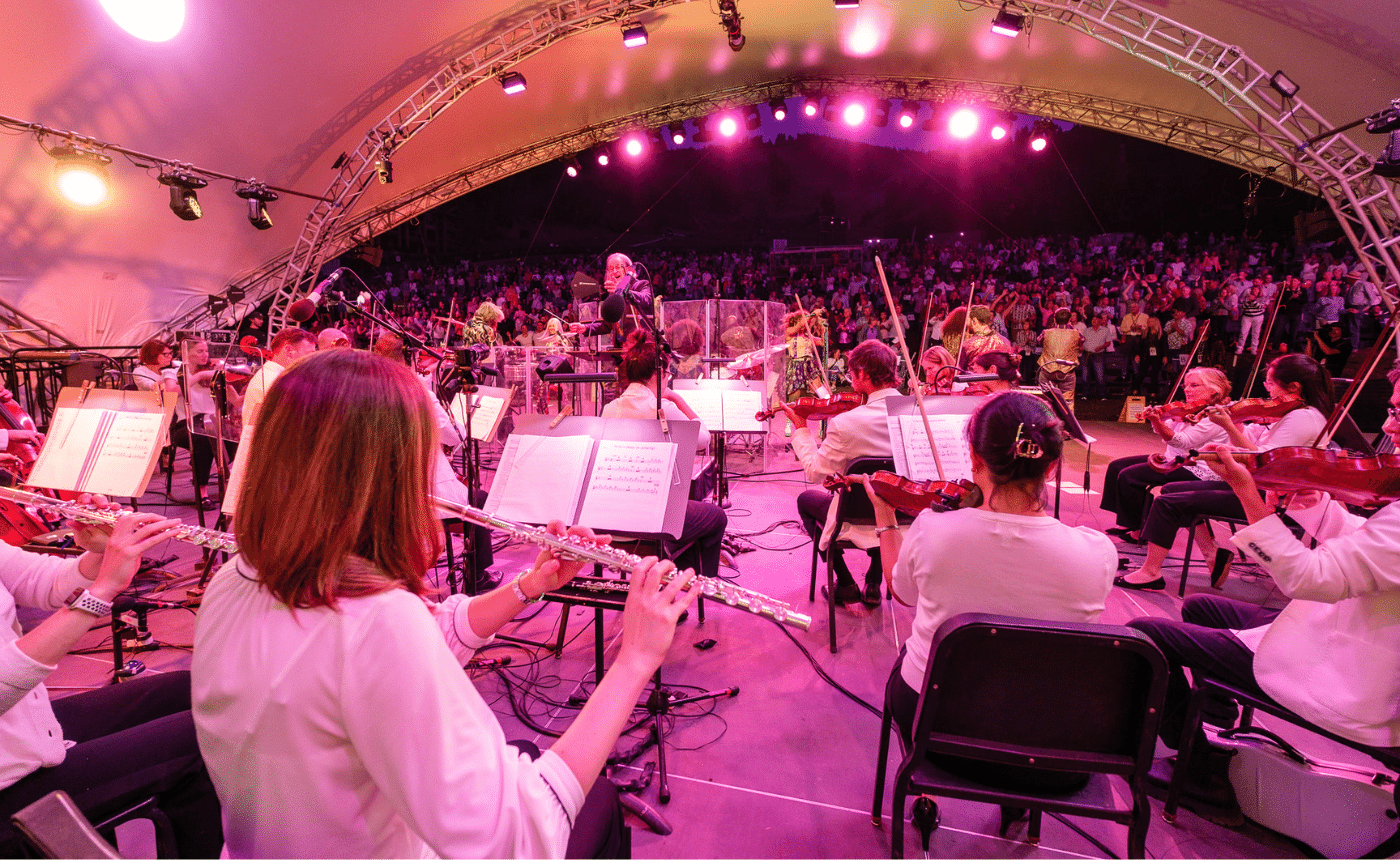Mahler – Symphony No. 6 in A minor, “Tragic”
Gustav Mahler (1860 — 1911): Symphony No. 6 in A minor, “Tragic”
Instrumentation: 4 flutes, 2 doubling piccolo, piccolo, 4 oboes, 2 doubling English horn, English horn, 4 clarinets, 4th doubling E-flat clarinet, bass clarinet, 4 bassoons, contrabassoon; 8 horns, 6 trumpets, 4 trombones, tuba; timpani, bass drum, chimes, cow bell, crash cymbals, orchestra bells, snare drum, tambourine, triangle, xylophone, harpsichord, celeste; strings
Performance time: 1 hour, 19 minutes
Background:
Though we now know Mahler mainly as a symphonist, he was known mainly as a conductor throughout his adult life. At the time composed his sixth symphony (in 1903 and 1904, with extensive revisions in 1906), he had achieved very high repute as a conductor, enjoying far greater renown in this field than as a composer. Yet even this was mitigated by problems in Vienna and New York City, where he was appointed principal conductor of the Metropolitan Opera in 1907 and also led the New York Philharmonic. Though his performances earned tremendous acclaim, his conflicts with the trustees of both organizations broke his spirit and damaged his health, and in 1911 he returned to Vienna, where he died of pneumonia that same year. The magisterial eleventh edition of the Encyclopedia Britannica, published in 1911, was known to provide authoritative explanations of anything worth explaining; editors did not see fit to include an article on Mahler. The highly respected New York paper the Herald Tribune, in noting Mahler’s passing, was respectful of his achievements as a conductor, but noted “We cannot see how any of his music can long survive him.”
Mahler had his influences – the brassy thunder of Bruckner, the superb craftsmanship of Brahms – but his style was utterly unique, and in retrospect it is surprising that its greatness was so long in gaining recognition beyond the community of his fellow composers. The music world waited for Beethoven’s heir; yet the one symphonist who built on Beethoven’s legacy, who created symphonic statements of monumental scope and philosophical content employing huge orchestral forces, who integrated choruses and vocal solos into the symphonic form, was marginalized. Even Beethoven’s obsessiveness in carrying his ideas to completion is echoed in Mahler, though the sound of the result could not be more different. The aural bliss of the Mahler sound seems to suspend all dimensions, especially time; one modern-day musicologist has compared the effect to taking a long, hot bath in heaven.
“Too long,” “too loud” and “too discordant” seem to have been the chief critical complaints. The late Nicolas Slonimsky, whose pronouncements about musical merit had the authority of law, said that it took until the second half of the 20th century for critics to catch up with Mahler. But even into the 1960s, Harold C. Schonberg, the esteemed chief music critic for the New York Times, called Mahler’s symphonies the expressions of a “simpering adolescent.” The reason: Like Beethoven, Mahler used the breadth of the symphonic form to explore the philosophical questions that concerned and even frightened him – oppositional ideas such as momentary pleasure versus eternal beauty, the joys of life versus the mystery of death, the sublime versus the vulgar. He had known tragedy and struggle in his personal life, including the loss of a daughter to scarlet fever, his own diagnosis with a serious heart condition, and his stormy relations with musical institutions such as the Met and the Vienna Staatsoper. Much of Mahler’s music seems to grope beautifully for the meaning of everyday concerns in the context of the eternal, and the texts he chose for his symphonies and art songs often address these questions directly.
What to Listen For
In many respects, his sixth symphony is the most conventional and traditional of his symphonies; there is no text and no specific story line. Many listeners hear it as a depiction of the life and death of a prototypical hero, an interpretation that could explain why the name “Tragic” has stuck with it. But unlike classical tragedy, the symphony does not end with a climactic resolution of truth and emotional catharsis. It is, in fact, Mahler’s only symphony that does not end in a final statement of positive transformation and triumph, a fact that prompted the British conductor Bruno Walter to call it “the first nihilist piece in the history of music.”
Still, the symphony is comprised of the four traditional movements, and they unfold in a manner that lends itself to listening either with or without a programmatic narrative. The most controversial aspect of the symphony remains the placement of the scherzo as either the second or third movement; it seems likely that Mahler changed his mind more than once regarding their order, and musicologists cite conflicting evidence on which sequence should prevail, but the one we will hear tonight – with the scherzo in third place – seems intuitively right.
For those listeners who hear in this symphony a narrative line of a hero’s life – perhaps Mahler’s own life – the opening Allegro suggests the protagonist’s entry and march into engagement with life’s challenges. He is met by what musicologist Pal Bekker calls “an unchangeable verdict of Fate:” a martial motif in oboes and trumpets emphasized by the pounding of timpani. Does Man have command of his own destiny in the face of such implacable forces? The woodwind chorale that follows, calm and self-possessed, suggests a dignified bearing in life. In the serene Andante moderato that we hear as the second movement, ardent lyricism suggests the redemptive, humanizing satisfactions of love in midst of life’s travails – especially since Mahler composed this symphony when his marriage to the legendary beauty and intellectual muse Alma Schindler was at its happiest. The sense of haunted fearfulness seems absent from this movement, and it is suffused with a romantic glow; but it is followed by the demonic scherzo, a movement of interwoven motifs that lead us inexorably back toward the impersonal forces of Fate we encountered in the first movement.
The final movement, an Allegro moderato leading to an Allegro energico, is huge – like a symphony within a symphony. It has a retrospective quality, as if the hero were recalling life’s past events and their collisions with the forces of Fate. A final brass chorale suggests the hero’s courageous engagement with life, but in the end, it is Fate that prevails.












